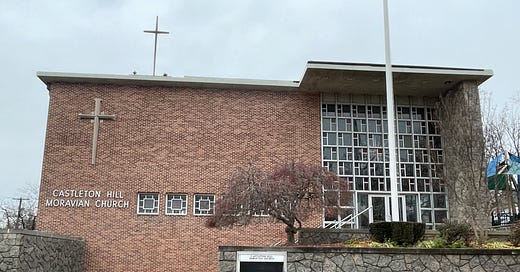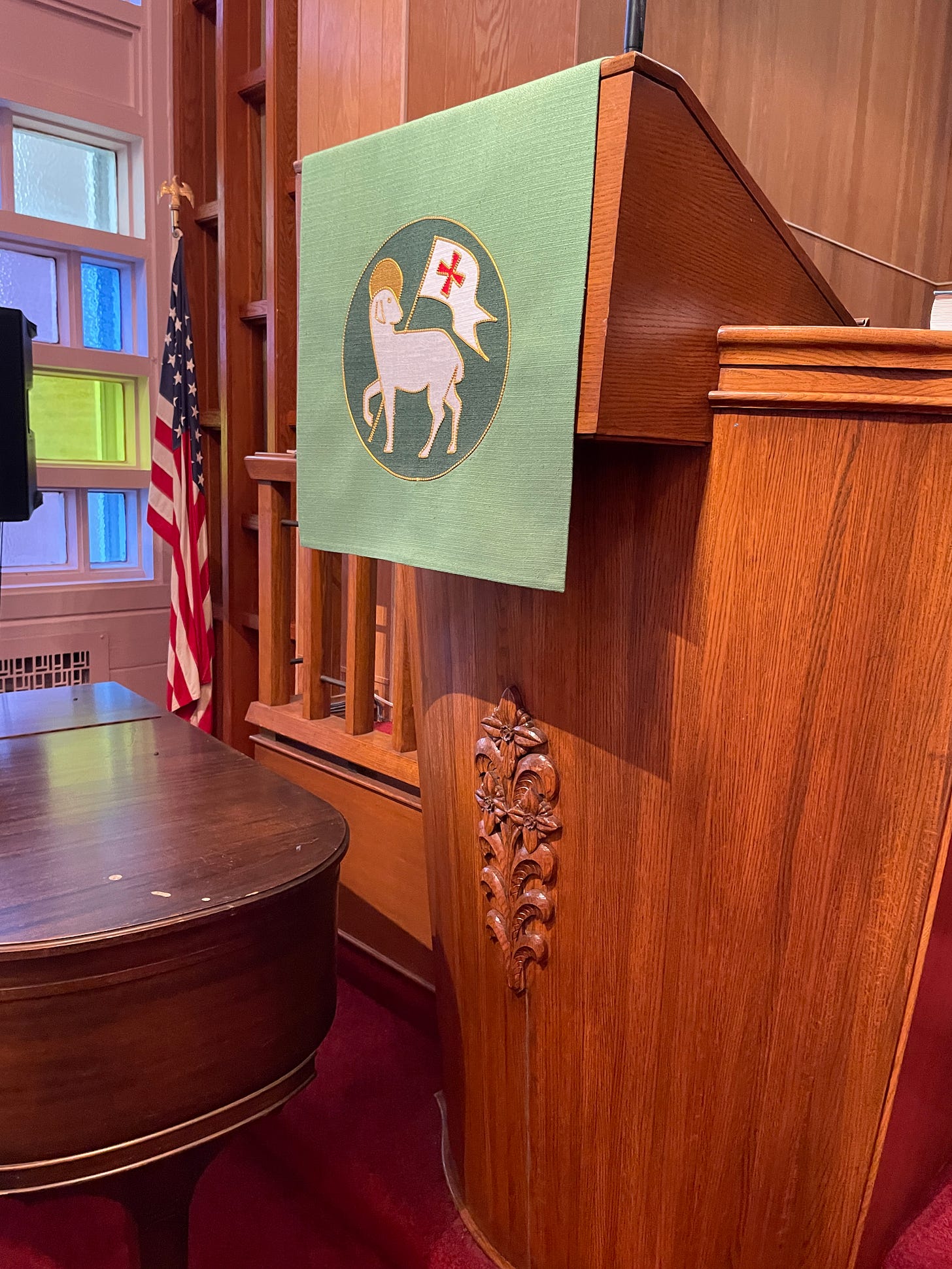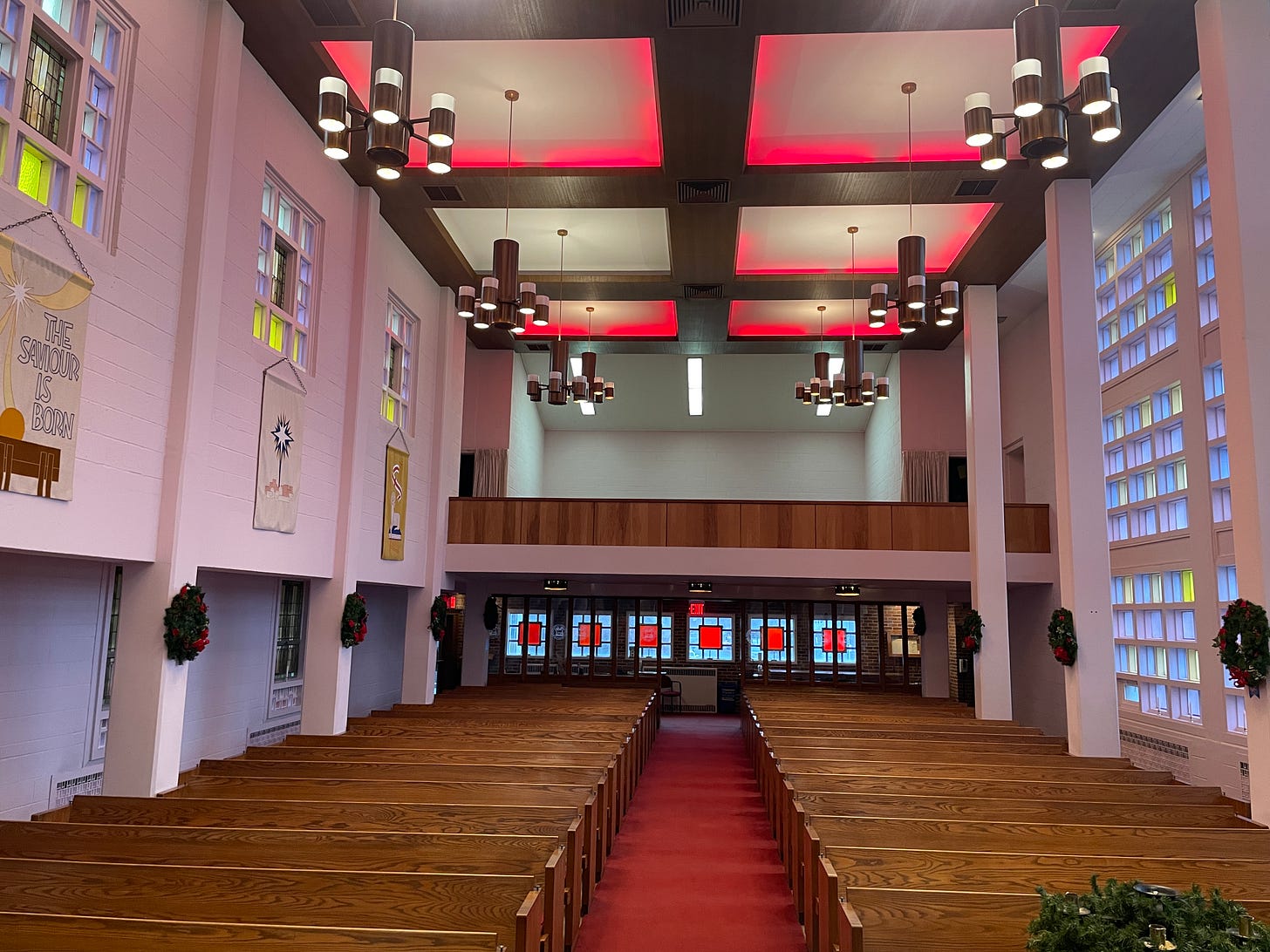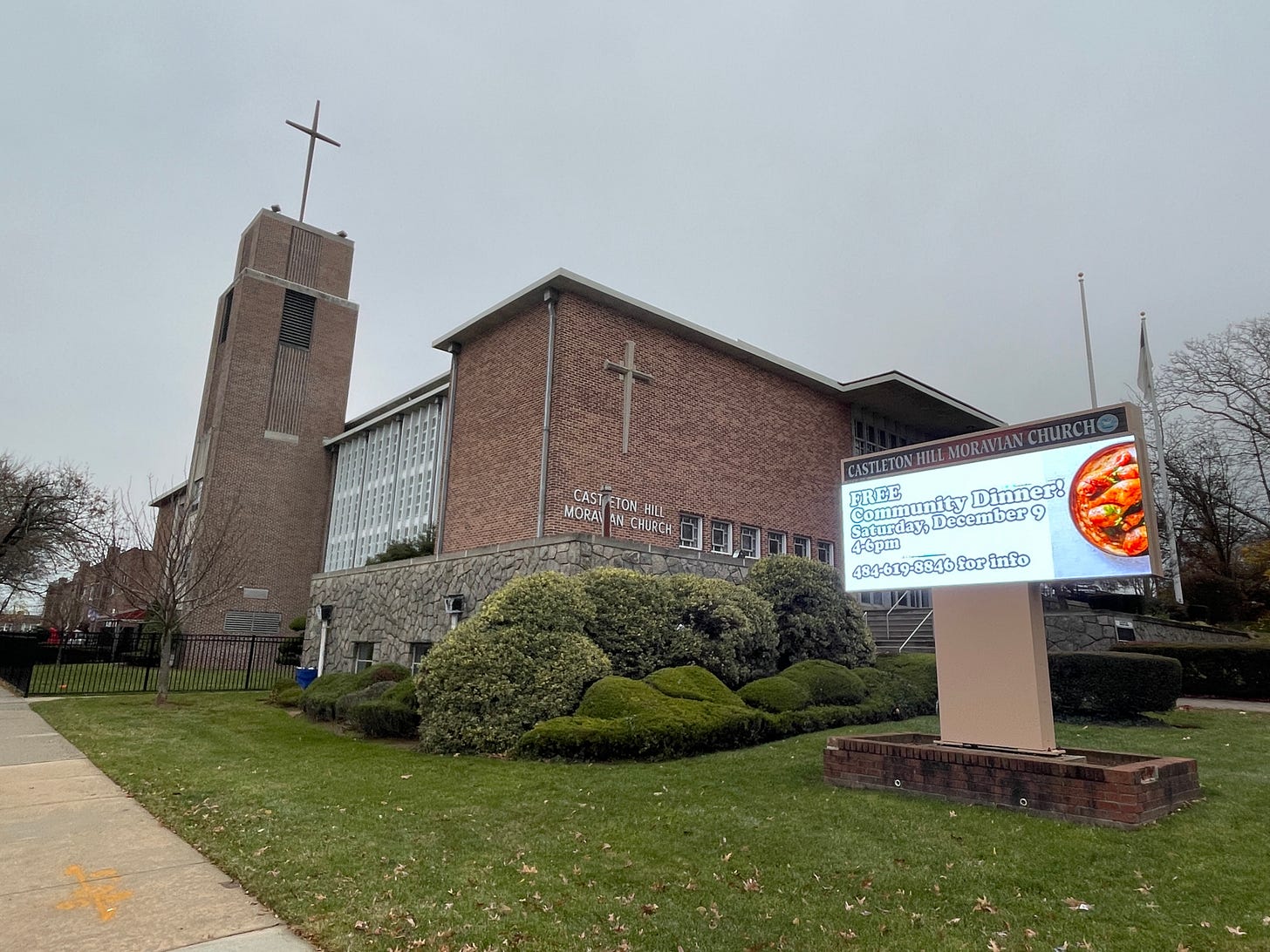Staten Island: Castleton Hill Moravian Church
To Grow its Numbers, a Church Works Harder in More Cynical Times
From the outside, it looks like a well-constructed brick building. A parking lot is to its right. A small playground is in between, and there may be some offices or classrooms behind that playground. The building itself has an unusual entrance for Staten Island’s North Shore with its glass double doors and a lobby covered with red carpet. On the outside, above the glass doors, thick glass squares in various pastel colors light up the building, making it seem welcoming and serene. Perhaps it is because once someone notices the small brick tower towards the left and further in the back, topped by a Christian cross.
This is Castleton Hill Moravian Church, located on Victory Boulevard in the Castleton Corners neighborhood of Staten Island. It celebrated its 150th anniversary in August 2023 with hopes it will have more anniversaries in the future.
“I don't know where we're going to be,” says Pastor Lance Fox. “My faith has taught me to not project that far down the road, and just try to just go a step at a time and see where God leads us next, next, and next. And that's what I'm trying to teach my congregation to do.”
The Moravian Church dates back over 500 years to what is now known as the Czech Republic. This area, Moravia and Bohemia, originally converted to Christianity during the Middle Ages because of two Greek Orthodox missionaries, Cyril and Methodius. The Bible was translated into the local tongue and the people of Moravia and Bohemia developed their own ways of worshipping and practicing their faith. Eventually, the two places came under the influence of the Roman Catholic church, which would only lead to protests and rebellion, with one preacher, John Hus, speaking out against the Catholic church for which he was burned at the stake in 1415.
But the defiance kept going. By 1457, the Moravian Church was established, 60 years before Martin Luther nailed his 95 theses, thus beginning the Protestant Reformation. The church numbered in the tens of thousands and had even spread to Poland. But persecution and war led many to seek refuge in present-day Germany. From there, Moravians began to preach around the world; they first settled in colonial America in the 1730’s. Staten Island was one of their first congregations.
“I guess the first church that was here on the island was in New Dorp (a neighborhood in the Mid-Island.) And then the other churches sort of radiated out from there,” says Pastor Lance. “That's kind of how Moravian churches spread. It started as a central church, and then they would do prayer meeting-type things in different places.”
As the United States obtained its independence and more immigrants, particularly from Germany, came to Staten Island, the local Moravian church kept growing, with four of them on the Island today. The New Dorp church was created in 1763. Castleton Hill was established in 1873, and two more followed in 1886 and 1889.
What binds these four churches is the Moravian Cemetery, right next to the New Dorp location. Open to all faiths, this 113-acre location is dotted by trees, flowers, and even a small lake. There are also mausoleums, both indoor and outdoor. The most famous mausoleum at this cemetery is the Vanderbilt Mausoleum, where many members of the Vanderbilt family have been buried since the late 19th century; the family had been members of the New Dorp church since 1742.
According to Pastor Lance, the money from the cemetery has helped keep his church afloat and the lights still on during the last few decades. Inside, the carpet remains as red as the lobby, and the pastel glass squares dot the walls on one side of the pews alongside the color white. On the other side, the brick white wall is more dominant with those same pastel glass squares higher up but still noticeable. It is almost as if the red carpet symbolizes the Blood of Christ while the white parts of the walls are symbolic of the Body of Christ. The pastel colors reflect joy, love, and serenity.
Despite the serene atmosphere, Castleton Hill Moravian Church membership has been declining for years. The pastor indicated that this may be because the members had become clique-y by the time he arrived here to fix up its community issues.
“It's all smaller, Christian mainline congregations,” he says. “They have a tendency to get very insular and the people tend to get very territorial. And it makes for a difficult environment to actually grow the church.”
One of the things that needed to be done was to decentralize this church’s leadership. Although some members were not pleased with the idea and left Castleton Hill, these changes led to a more inviting church for future members.
Pastor Lance is cautiously optimistic about the future of Castleton Hill Moravian. He says his church is the most ethnically diverse among Staten Island’s Moravian churches, which could help increase church attendance from its current numbers of between 20 - 30 per Sunday. In five or ten years, he hopes to see his congregation increase to between 150 - 200 people, though if it topped out at 120 people, that would be acceptable. The pastor is aware that being in a church or practicing a faith is not what it used to be like nearly 50 years ago.
“I think, in this world, especially on Staten Island, there was so much cynicism here, and so much entitlement here,” Pastor Lance says. “I just find that just being very open and transparent, is very disarming for people. I also find that just being open and generous is very disarming.”
One of the core values of Moravian churches is radical hospitality. This means giving generously without expecting anything in return. There is also a monthly community dinner that is free with no preaching or group prayer. The goal is to serve and give Islanders a chance to meet other people in their community.
Pastor Lance asks the staff at Castleton Hill to think about what they can do better and how they can serve more people. Their goal is to amaze people with God’s love rather than simply giving out canned food to those with food insecurity. The work at Castleton Hill is supposed to go above and beyond to serve others.
“I think our retention is a lot higher than it ever was when people will come visit,” Pastor Lance says. “It connects with the congregation members and they really enjoy [it] and have a much higher chance of coming back. And even if we don't keep people coming in the door because of those things, that's not the goal. The goal is to serve people.”







